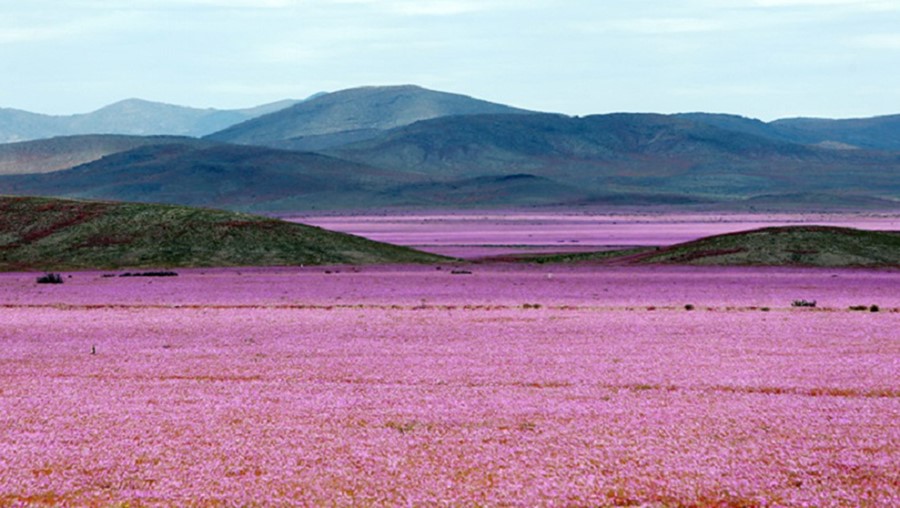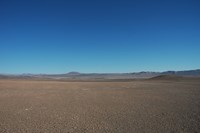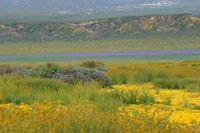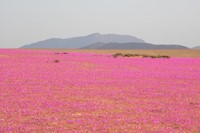Discover the "super-bloom" phenomena turning the arid turf of the Atacama Desert into a resplendent sea of flowers
Where on Earth?
Atacama Desert / Death Valley
Following a year of unusually heavy rains, some of the driest places are earth are set to bloom with millions upon millions of wildflowers. Already, in the Atacama Desert, malva flowers and other species have turned the normally brown landscape a brilliant pink (a display that has garnered much attention on AnOther Loves). And thousands of miles away to the north, fragile plants could soon be blossoming amid one of the most foreboding parts of the planet: Death Valley.
Located in a ‘rain shadow’ where very little precipitation falls, the Atacama is usually one of the driest places on the entire planet. Some weather stations in the high desert have never recorded rain and this ‘hyperaridity’ has lasted at least 3 million years, baking the land into a hard, unforgiving place. When rain and snow do break through the rain shadow, the results can be disastrous. With nothing to stop or absorb the rushing water, flash floods can bring havoc. In March of this year, rare heavy rain in the south of the Atacama created mudslides which killed over 25 people. Further rain in August soaked the ground again, leading to the current display of over 200 species blossoming in the desert.

What on Earth?
Coinciding with the cyclical El Niño weather pattern, millions of flowers do periodically bloom in these desolate deserts. Buried beneath the surface, their bulbs await the arrival of the ephemeral moisture before bursting forth in an overwhelming display of colour. The last time this happened in Death Valley was in 2005, when perfect conditions brought a “super-bloom” event to the area, which once recorded the hottest ever air temperature on Earth: a brain-melting 56.7° C. With a strong El Niño predicted this year, possibly fuelled by climate change, conditions could once again be good for seeing this beautiful, rare phenomenon.
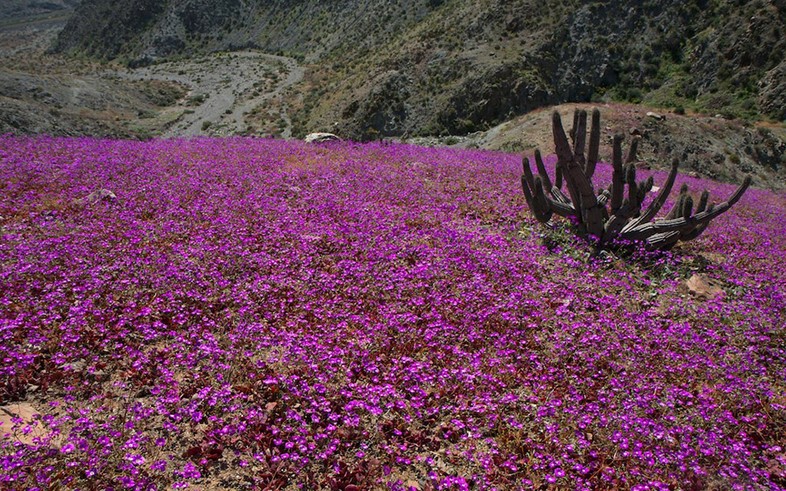
According to the US National Park Service, “most of the showy desert wildflowers are annuals, also referred to as ephemerals because they are short-lived. A deep soaking, gentle rain is essential for a desert floral display. To begin, a rainstorm of a half inch or more is needed to wash the protective coating off wildflower seeds and allow them to sprout. For plants to continue growing, rainstorms must come at evenly-spaced intervals throughout the winter and spring. The best blooms are triggered by an early, winter-type rainstorm in September or October, followed by an El Niño weather pattern that brings above average rainfall to the Desert Southwest. As the temperatures get warmer the well established plants then put on a growth spurt and start to bloom.”
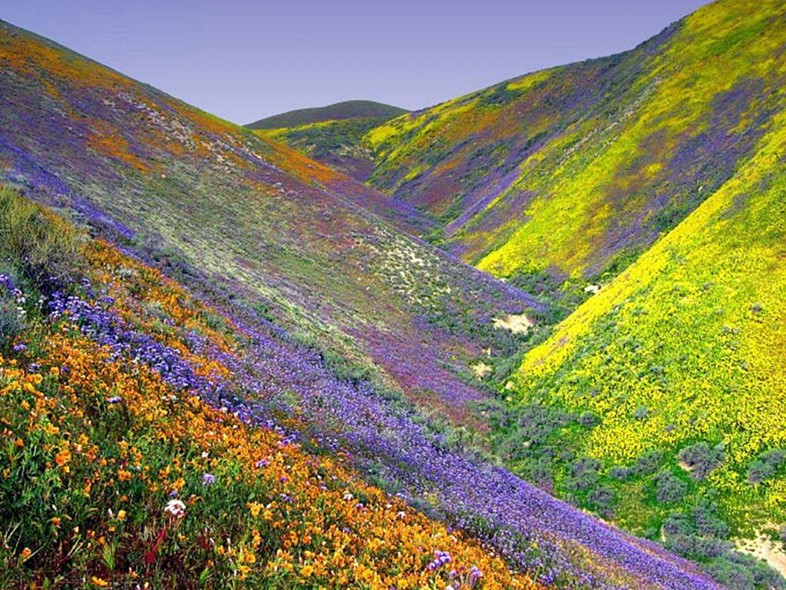
How on Earth?
You’ll need to be quick if you want to see the Atacama flowers – they’re not called ephemerals for nothing. The road between Santiago and Vallenar in Chile is a good place to visit. In Death Valley, flowers bloom in different areas between mid-February and mid-July, depending on altitude. The National Park Service website has a dedicated information page and will be posting updates on their Facebook page as Spring approaches.
